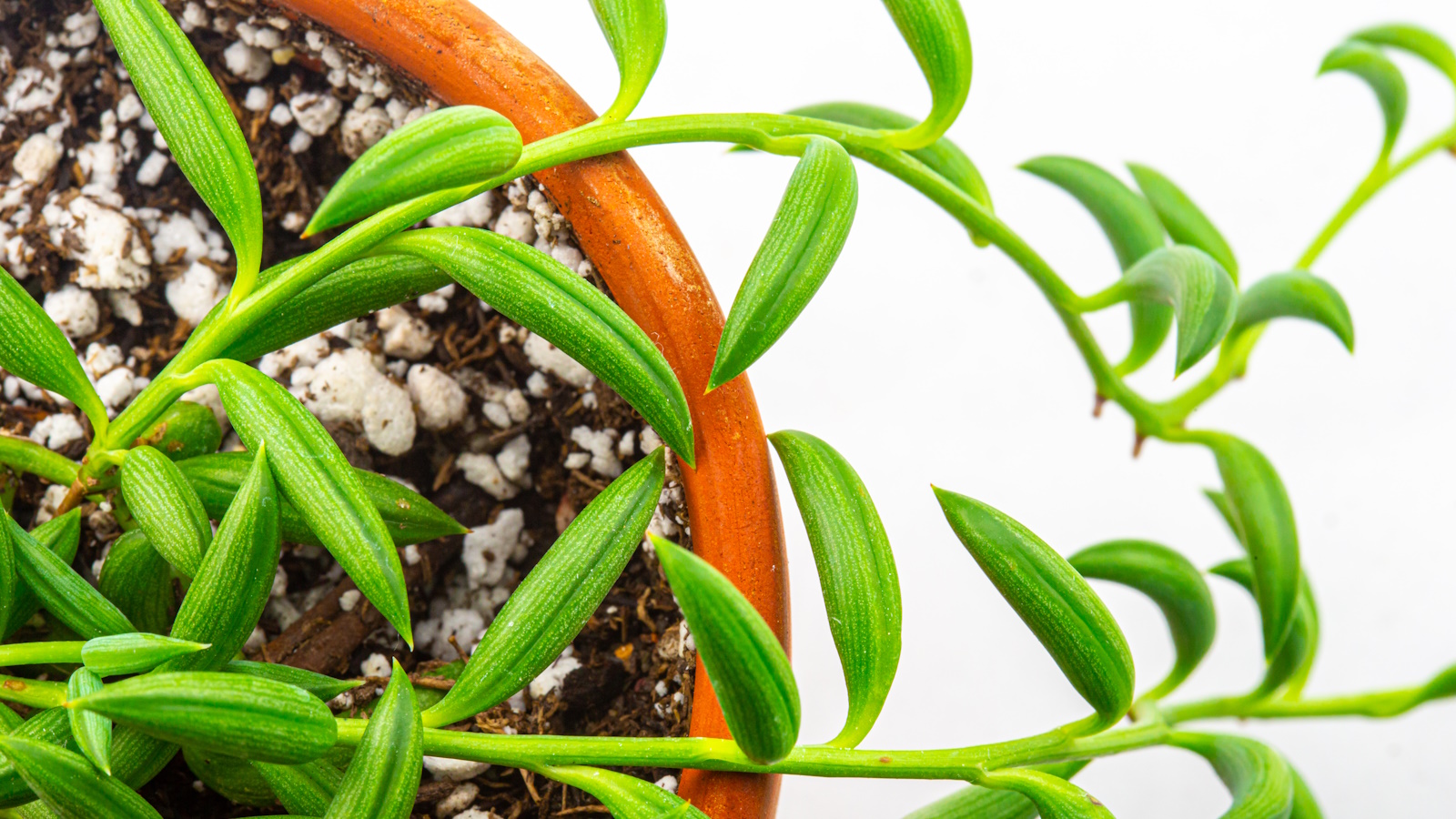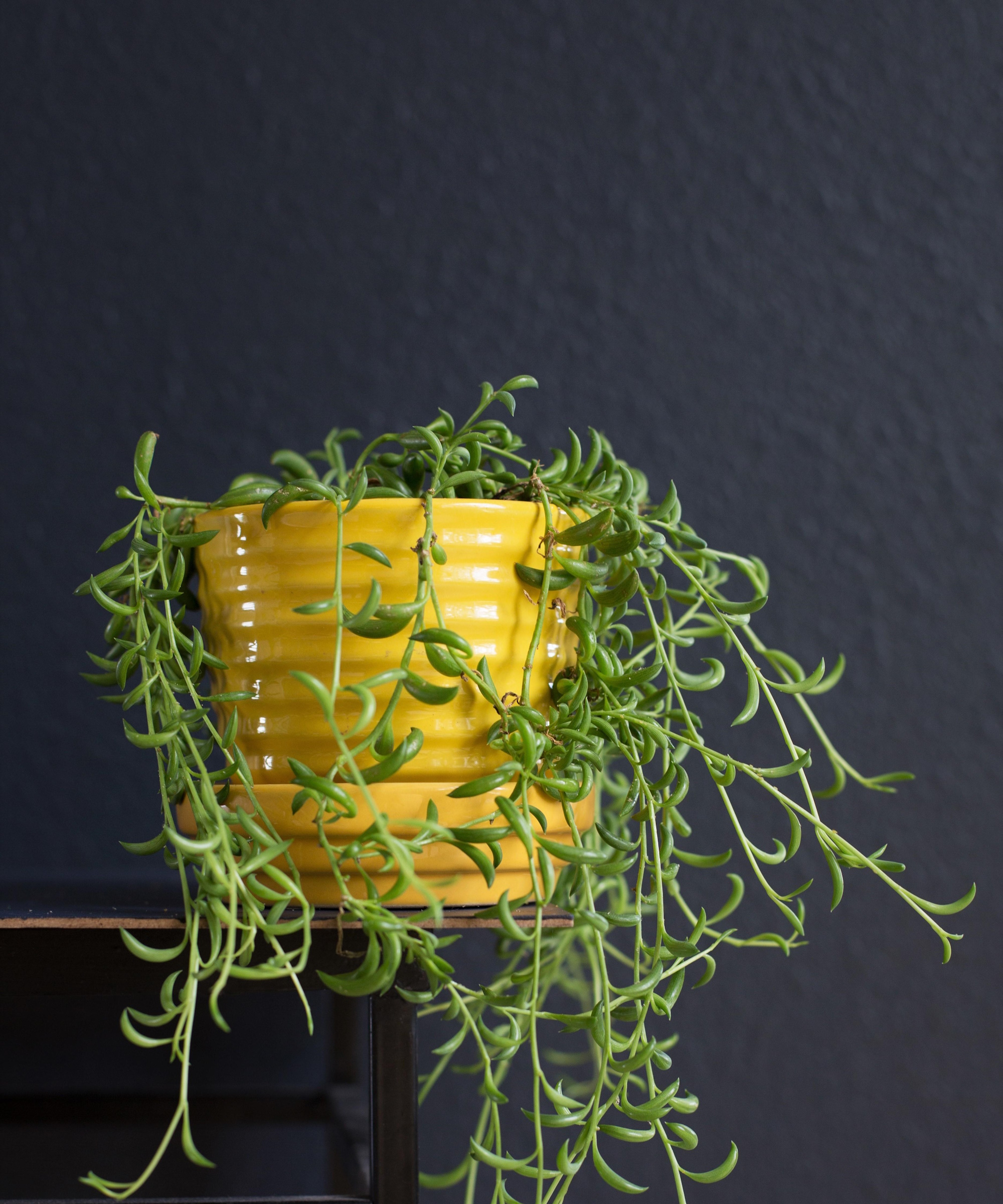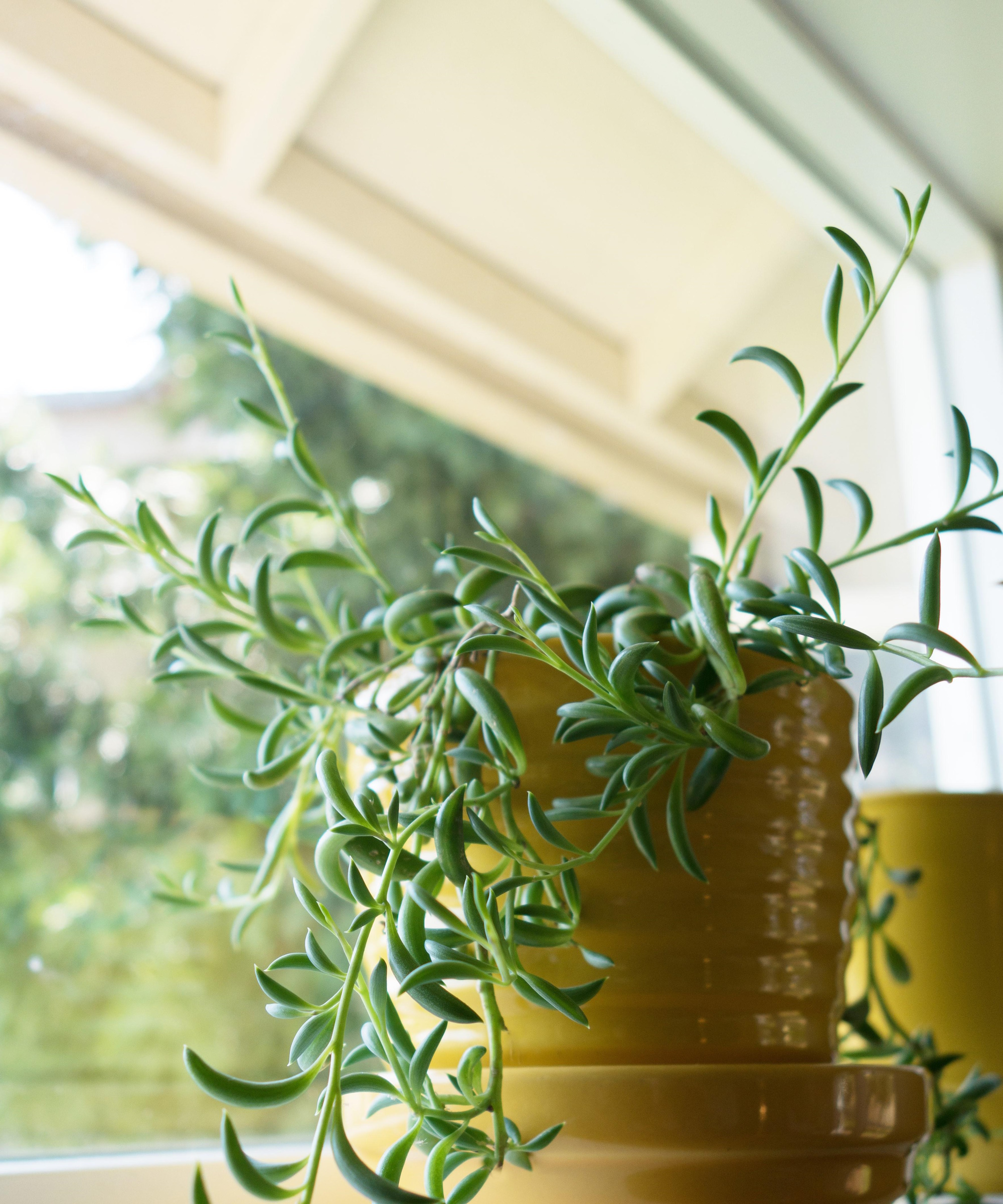How to care for a string of bananas plant – a trailing vine with a unique shape
This easy going succulent will make an eye-catching addition to your indoor plant collection


Despite its name, string of bananas, also known scientifically as Curio radicans, is not a fruit but instead a species of succulent with banana-shaped leaves. Native to South-Africa, string of bananas have become an increasingly popular indoor houseplant.
String of bananas is a pretty low-maintenance succulent, and like many of the typical succulent care requirements, string of bananas prefer full indirect sunlight and infrequent watering. These houseplants are incredibly versatile, easy to take care of, and work perfectly in hanging pots to show off their trailing vines.
Like string of pearls plants, string of bananas are visually captivating and would definitely be a talking point in your home. With our expert guide you can discover how to best care for these unusual, textural succulents.

How care for a string of bananas
Our experts have shared their insights on six key areas of cultivating and caring for a string of bananas plant.
Finding the right location for your string of bananas

String of bananas prefer a location where they can receive bright, indirect sunlight. They can tolerate some direct sunlight, especially in the morning or late afternoon. Avoid setting it in locations where the light levels are low, as it can cause the plant to grow leggy and be less vigorous.
String of bananas thrive in temperatures between 65F – 80F and humidity levels ranging from 40% – 60%. As with many indoor plants, try not to let them be subjected to draft or extreme temperature changes.
Tony O'Neill from Simplify Gardening notes that 'a string of bananas plant is toxic to cats and dogs', so if you have pets, keep it somewhere that your pets are not able to access. This plant can also be mildly toxic to humans, so you should practice caution if you have kids with curious hands and position it high up.

Tony O'Neill is a gardening expert, author, and educator. With a thriving YouTube channel boasting 405,000 subscribers and over 1.4 million monthly views, along with his award-winning website Simplifygardening.com, he shares his passion for gardening and sustainability. He has also authored Composting Masterclass, Your First Vegetable Garden, and Simplify Vegetable Gardening, empowering individuals to cultivate their own green spaces.
Selecting the best potting soil and container
String of bananas thrive in well-draining soil and are perfect for hanging baskets or containers where their trailing vines can cascade beautifully.
Choose a pot with a drainage hole to prevent waterlogging, as waterlogged soil could cause root rot. Shallow pots from Amazon with a broader base are ideal for accommodating the trailing growth habit of the plant.
Use a cactus or succulent potting mix such as the Valley Garden organic potting soil from Amazon to ensure good drainage. You can also mix regular potting soil with sand or perlite.
Getting the watering right

‘String of bananas are drought-tolerant and should be allowed to dry out between waterings,’ says houseplant expert Vladan Nikolic.
‘Water the plant thoroughly when the top inch of soil feels dry to the touch, allowing the excess water to drain away. Avoid overwatering, as this will lead to root rot.’
Vladan suggests you should water more frequently during the growing season (spring and summer). When caring for a string of bananas and other succulents in winter, watering should be scaled back so that the plant is never allowed to sit in water, thereby helping to avoid waterlogged soil in the plant's dormant period.

Vladan Nikolic, otherwise known as Mr. Houseplant, is a houseplant expert with over 10 years of experience. He is the founder of the houseplant care blog MrHouseplant.com and also an influencer who helps newcomers in the houseplant world become great plant parents. You can find him on Instagram, TikTok, Youtube, Facebook, Twitter and Pinterest.
Pruning and maintenance
Pruning is necessary to keep your plant in good condition and shape. Regularly remove dead, damaged, or yellow leaves to stimulate fresh growth and avoid the spread of disease. Trim back leggy stems to promote a bushier, more compact growth habit.
To prune your string of bananas use clean, sharp scissors or pruning shears to cut back stems. You can also propagate the cuttings to create new plants. String of bananas prefer a bit of root constriction, but try to repot them every 2-3 years to give them fresh the soil and make a bit more space available to the roots, which will in turn promote growth.
Fertilizing the right amount

When caring for a string of bananas, you should fertilize your plant sparingly during the growing season, which is usually from the beginning of spring to the end of summer. Use a balanced, water-soluble fertilizer from Amazon such as diluted to half-strength during the growing season.
Feed the plant once a month during spring and summer and avoid fertilizing in the fall and winter. Overfertilizing should be avoided, as this plant will grow profusely, and its resilience will be lowered.
Understanding pests and diseases
Inspect your string of banana plants regularly for signs of pests like spider mites, mealybugs, or aphids. If infestations occur, gently wash the plant using a mild soap solution and rinse thoroughly with water.
Regularly inspect the banana plant, and treat severe infestations with neem oil such as Velona USDA organic neem oil from Amazon or insecticidal soap, following the manufacturer's instructions carefully.
FAQs
Do string of bananas like to be misted?
In short, no, as a string of bananas prefer dry environments. By misting the plant you are allowing water to linger on the leaves, which can create breeding grounds for harmful bacteria.
When caring for your string of bananas, it's a good idea to watch for any signs of underwatering. One common sign is if the plant starts to drop leaves at the base of its stem.
You can discover even more of the best hanging plants for your home in our expertly curated list.
Sign up to the Homes & Gardens newsletter
Design expertise in your inbox – from inspiring decorating ideas and beautiful celebrity homes to practical gardening advice and shopping round-ups.

Seraphina is a contributing editor at Homes & Gardens, writing Solved features on organizing and storage. She loves to decorate and also grow her own produce from her home in London. Her previous experience includes working at Women's Health and Fabulous Magazine.
-
 How to clean a patio – 6 different methods, and when you must use a chemical cleaning agent
How to clean a patio – 6 different methods, and when you must use a chemical cleaning agentFrom manual scrubbing, natural solutions or calling in the pros, industry experts reveal the benefits and considerations of each method
By Andy van Terheyden Published
-
 Kris Jenner's favorite air fryer, the Ninja Crispi, is the perfect small kitchen solution – it deserves a place on the most compact of countertops
Kris Jenner's favorite air fryer, the Ninja Crispi, is the perfect small kitchen solution – it deserves a place on the most compact of countertopsKris approves of this compact yet powerful air fryer, and so do our own kitchen appliance experts, praising it for its multifunctionality
By Hannah Ziegler Published